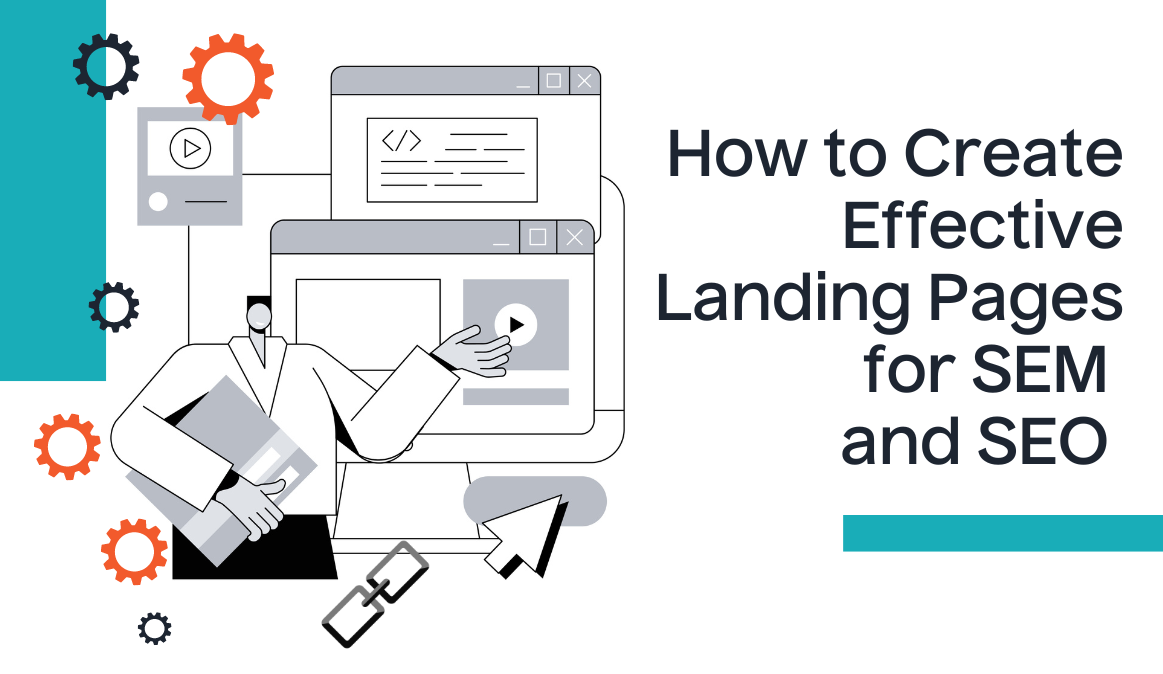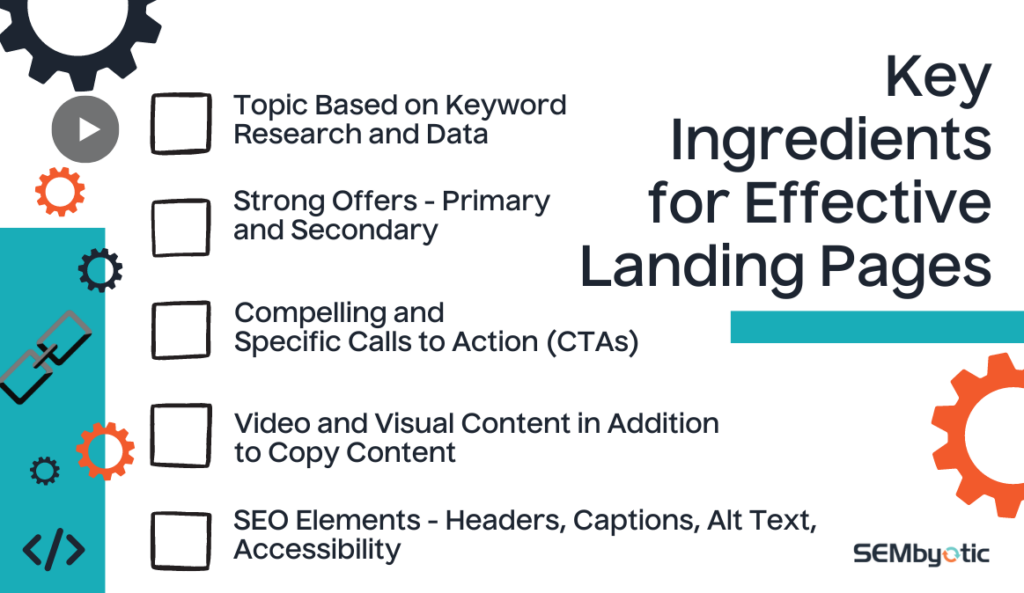
How to Create Effective Landing Pages for SEM and SEO
Does your organization create separate landing pages for Pay-Per-Click (PPC) campaigns and organic search?
Managing separate landing pages for virtually the same content simply to track PPC traffic vs. SEO traffic can be cumbersome and ineffective. Additionally, it just makes good marketing sense that if you have a high-performing page of content, you should be able to leverage that page for various digital marketing channels.
With strategic planning, keyword research, and an understanding of informational search intent, you can adopt a single landing page to address your most important digital marketing objectives: your search engine marketing (SEM) and search engine optimization (SEO) objectives to drive traffic to your page. And then conversion rate optimization (CRO) to make sure that traffic converts once it gets there.
When does it make sense to create separate landing pages for the same offer?
Before we get into the weeds on single landing pages for SEO and paid, there are a few instances where it might make sense to maintain separate landing pages:
- You’re running ads targeted to an audience that requires a modified message
- You’re testing wholly different layouts or content during A/B testing
- You’re promoting the offer directly, but SEO for that offer might not make sense (e.g., Free Trial)
For a high-converting landing page, your topic and offer(s) must be aligned and high quality.
Most of our business-to-business (B2B) clients offer a suite of products and solutions. The urge to cross-sell and upsell can be tempting. However, going too broad in your page content and shifting focus away from your primary objective of first educating and helping your page visitors evaluate your product or service can do more harm than good.
Start with the most important primary topic you select based on keyword research, audience insights, and data from your sales team. As an example, this could be, “What is a Flux Capacitor?”
Once you select your topic, stick to answering the frequently asked questions about your chosen topic. What does it do? How does it work? Where or when does it work? Who does it help?
All of your offers on your landing page should be aligned with and work to support the chosen topic. In our example of “What is a Flux Capacitor?” the offers might be:
- Free Trial to begin using the Flux Capacitor
- White paper about the Flux Capacitor
- Guide on how to use the Flux Capacitor to solve the most common Time Travel issues
- Use Case about how a customer used the Flux Capacitor to solve a compelling problem.
You don’t need a multitude of offers and calls to action (CTAs). One or two strong offers can get the job done and help focus your visitors’ attention. But your primary offer should be the step you want the user to take to engage with your product.
Don’t overlook the importance of compelling CTAs.
Sure, we’ve all seen those “learn more” or “read more” CTAs, but those are never going to convert as well as a CTA that tells the user exactly what they will get in return for their additional time on your website.
Be specific in your CTAs. For example, instead of something like “learn more” or “read more,” go with “try the Flux Capacitor for free.” Instead of “download the use case,” try “see how Dr. Brown uses the Flux Capacitor.” Don’t blow a great offer with a lackluster CTA.
To create a landing page that performs for both SEM and SEO, include an explainer video. And focus on answering important informational search queries.
Use video to explain the most commonly asked questions about your product or service.
We’ve routinely mentioned this tactic over the past few years – add video to the landing pages leveraged in informational intent SEO strategy. There are several reasons why we feel strongly about adding video to your informational intent pages:
- When your content ranks in video search and image search in Google, the likelihood that it will rank highly in text search increases.
- Videos can be used to rank directly within YouTube and referenced back to our organic landing pages.
- Videos improve engagement metrics. Google claims that engagement rate is not a ranking factor, but multiple studies suggest otherwise.
Don’t forget those other queries beyond “How to.”
Your potential customers and visitors to this landing page are there to get the answers they need for the important questions about their problems and the solutions your product or service provides. Give them what they need by answering the basic “how to” and also “what is,” “when,” and “why” about your product or service. But remember to stay true to your targeted topic.
To dig deeper into intent-based SEO strategies, read our previous articles on How to Develop an Intent-Based SEO Content Plan and An Informational Intent Strategy: Start With Video.
Here’s a basic template for creating a single landing page for your SEM/PPC and SEO objectives focused on CRO.

Review this SEM & SEO landing page checklist to build one page for organic rankings and paid promotion.
- Check that your landing page layout is clean, uncluttered, and easy to engage with from a user experience perspective.
- Avoid a long scroll past a large hero image to get to the critical content.
- Ensure that your content is helpful and engaging. It should provide real solutions to real problems and not beg more questions than it answers.
- Include a short “how to” whiteboard or other explainer video content that features a compelling speaker or voiceover and include captions.
- Use or create images that are purposely built for the landing page. Avoid pulling images from a PowerPoint deck or repurposing images from other pages. Use proper HTML5 captions and alt text for an added SEO boost.
- Include a “birds of a feather” section that will resonate with your target audience. This could be logos or anonymized testimonials – e.g., “Systems Architect, Future 100 Company in the Financial Services Industry.”
- Make good use of prominent CTAs and include additional in-context CTAs that provide alternate pathways to conversions.
- End the page by promoting your value and include additional pathways for continued engagement.

DOWNLOAD AND SAVE THIS CHECKLIST OF INGREDIENTS FOR A HIGH-PERFORMING LANDING PAGE.
In the end, a great, high-performing landing page takes even greater planning.
Gather your ingredients for your landing page like you would a great recipe.
Start with your selected topic based on compelling audience insights, keyword research, and sales data. Develop your strong offers and select your primary and secondary calls to action.
Then, create your supporting content that helps the potential customer move through the landing page and explore your product or solution. Do this in a way that is most helpful to them – using compelling videos and visuals.
The key takeaway? The topic and strong offers will be the critical ingredients for a landing page that converts. Start there.